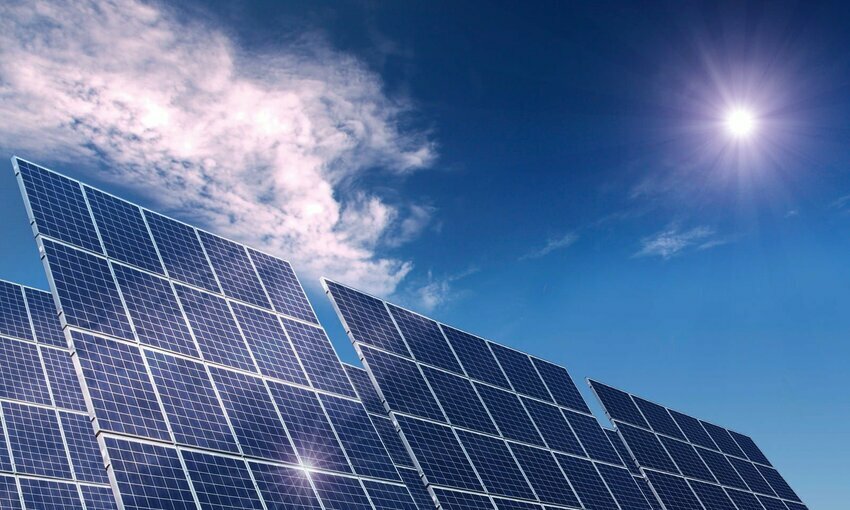 (Credit: Canva Pro)
(Credit: Canva Pro)Europe is committed to fulfilling its pledges under the Paris climate agreement. To that end, Iberdrola will build the continent’s most immense onsite solar power for Saudi-based SABIC, a petrochemical maker.
The move is part of a more considerable effort by the continent to go green, primarily motivated by Russia’s war against Ukraine — turmoil that put extreme price pressures on Europe’s energy markets in 2022. Indeed, wind and solar resources on the continent are increasing rapidly.
The Spanish multinational electric utility inked a 25-year power purchase agreement with SABIC to avoid 700,000 tons of CO2 during this time. It’s a 100-megawatt photovoltaic solar plant that costs around $70 million. Construction will start next year.
“SABIC is delighted to see the final permits granted to build the Cartagena solar plant, which will bring SABIC one step closer to having the world's first plant of this size operating 100% on renewable energy. This is an important milestone in SABIC's journey to transition all global operations to clean energy by 2050 while continuing on our roadmap to carbon neutrality,” said Bob Maughon, the company’s executive vice president of sustainability.
Paris aims to keep temperature rises to no more than 1.5 degrees Celsius by mid-century compared to pre-industrial levels to mitigate such things as droughts, floods, and food and water shortages. The European Union mandates 55% cuts in greenhouse gas emissions by 2030. It aims to be net zero by 2050.
Last year, the globe added a record 300 gigawatts of renewables. The International Renewable Energy Agency (IRENA) says that green energy makes up 40% of the total installed capacity worldwide. Despite the progress, Director-General Francesco La Camera says the energy transition is off track: renewables must hit 1,000 gigawatts annually to keep 1.5 degrees Celsius alive.
The G-7 — the world’s most advanced economies — is calling for 150 gigawatts of offshore wind and one terawatt of solar rooftop power by 2030. As for the European Union, wind and solar power comprised 20% of its electricity production last year, generating more energy than natural gas, says the think tank Ember. Solar grew at the fastest rate, growing by 24% and generating more than 39 terawatt hours of electricity in 2022.
The trend is suitable for both the wallet and the air. Ember says the solar transition left the continent with $11 billion more to spend — moved saved from not having to buy natural gas to heat homes. Beyond using solar, the European Union is also building more wind facilities while slowing down the closure of nuclear plants. As a result, the think tank says fossil fuel usage will fall by 23% this year.
“Europe has avoided the worst of the energy crisis. The shocks of 2022 only caused a minor ripple in coal power and a huge wave of support for renewables,” said Dave Jones, head of data insights for Ember.
“Any fears of a coal rebound are now dead. Europe's clean power transition emerges from this crisis stronger than ever,” he continued. “Not only are European countries still committed to phasing out coal, they are now striving to phase out gas as well. The energy crisis has undoubtedly sped up Europe’s electricity transition. Europe is hurtling towards a clean, electrified economy, and this will be on full display in 2023. Change is coming fast, and everyone needs to be ready for it.”
When Frans Timmermans addressed IRENA’s assembly in January, he said the two most significant events in his life were the fall of the Soviet Union and Russia’s invasion of Ukraine. But the war has backfired on Russia and forced much of the world to speed up their transition to green energy and reduce their energy consumption.
“We are speeding up renewables and diversifying our energy supply because Putin has turned energy into a weapon,” says Timmermans, first vice president of the European Commission. “Our energy sovereignty can’t be found in fossil fuels but in renewables. This transition is moving faster than ever before.”
“The increased focus on energy security as a result of the Russia-Ukraine war has the potential to accelerate the energy transition as countries seek to increase access to domestically produced energy, much of which is likely to come from renewables and other non-fossil fuels,” added Spencer Dale, BP’s chief economist.
“But the events also show how relatively small disruptions to energy supplies can lead to severe economic and social costs, highlighting the importance that the transition away from hydrocarbons is orderly, such that the demand for hydrocarbons falls in line with available supplies,” he concluded.
IRENA said that wind and solar prices have fallen by two digits since 2020. That’s why about 80% of the installed electric generation capacity has come from renewables in the last four years. But we need to triple the investments in renewables — from the existing installed base of 260 gigawatts to more than 800 gigawatts by 2030. That will require an investment of $5.7 trillion.
Iberdrola’s solar buildout for SABIC is part of that larger effort.